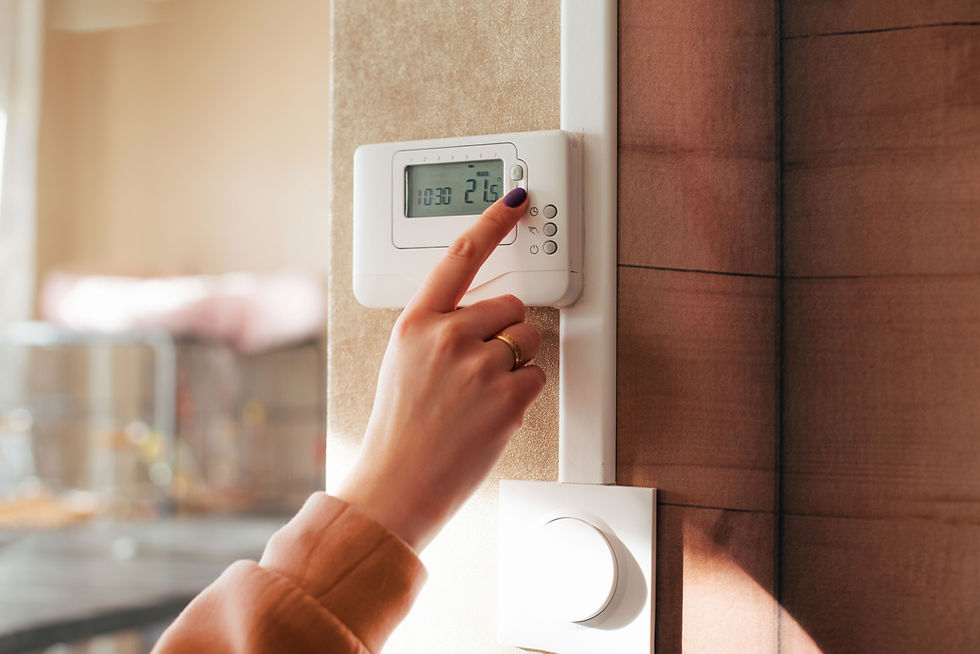Climate change is one of the greatest challenges our planet faces today. As global temperatures continue to rise, keeping your home at a comfortable temperature has become a priority for many. However, this task can also pose a challenge, as excessive energy use to regulate temperature contributes to global warming. Fortunately, there are several ways you can optimize your home to be more energy-efficient and maintain ideal temperatures year-round, all while reducing your environmental impact.

1. Efficient Insulation
Proper insulation is one of the most effective ways to maintain an ideal temperature in your home throughout the year. Good insulation in walls, ceilings, and floors helps prevent heat from escaping during the winter and keeps it out during the summer. This reduces the need to rely heavily on heating or air conditioning systems.
Tip: Consider investing in double-glazed windows and adding insulation in the attic, as these are key areas where the most energy is lost.
2. Smart Temperature Control Technology
Smart thermostats are an excellent way to optimize your home's temperature while also saving energy. These devices allow you to program heating and air conditioning to adjust automatically based on the time of day, outdoor temperature, and household activity.
Tip: Set your thermostat to lower the temperature at night or when you're not at home to save significant amounts of energy on your bills.
3. Natural Ventilation
Proper ventilation is key to keeping your home comfortable without relying too much on air conditioning. Opening windows during cooler times of the day, such as early morning or late evening, can help refresh your home naturally.
Tip: If possible, install ceiling fans, as they consume much less energy than air conditioners and improve air circulation in your home.
4. Energy-Efficient Appliances
As appliances age, they tend to consume more energy. Consider upgrading to more energy-efficient models. This not only helps reduce your energy bills but also minimizes your home's carbon footprint.
Tip: Look for appliances with the Energy Star label, which ensures they meet government standards for energy efficiency.
5. Solar and Renewable Energy
Solar energy is one of the most sustainable solutions for maintaining an energy-efficient home. Installing solar panels can reduce your dependence on non-renewable energy sources and help maintain ideal temperatures without harming the environment.
Tip: In addition to solar panels, consider using solar curtains and awnings to reduce the amount of heat entering your home during hot months.
6. Smart Landscaping
The natural environment around your home can also play a big role in regulating temperature. Planting trees and shrubs around the house can provide shade and reduce the amount of heat your home absorbs, especially in areas where the sun is strongest.
Tip: If you live in a warm area, planting deciduous trees that offer shade in the summer but allow sunlight in during the winter can be a natural and efficient solution to maintaining your home's temperature.
7. Sealing Cracks and Leaks
Small cracks or gaps in doors, windows, or walls can often allow hot or cold air to escape or enter your home, making your heating or cooling systems work harder.
Tip: Regularly inspect your home for cracks or air leaks and seal them. Products like weather stripping or caulking can help improve your home’s energy efficiency.
Climate change is altering the way we live, but it is possible to optimize our homes to adapt sustainably to these new challenges. From technological upgrades to natural solutions, every small adjustment can make a big difference, both in your home's comfort and in reducing your environmental impact.

By investing in energy efficiency and taking advantage of available resources, you’ll not only create a more comfortable living space but also help combat climate change.

Comentarios